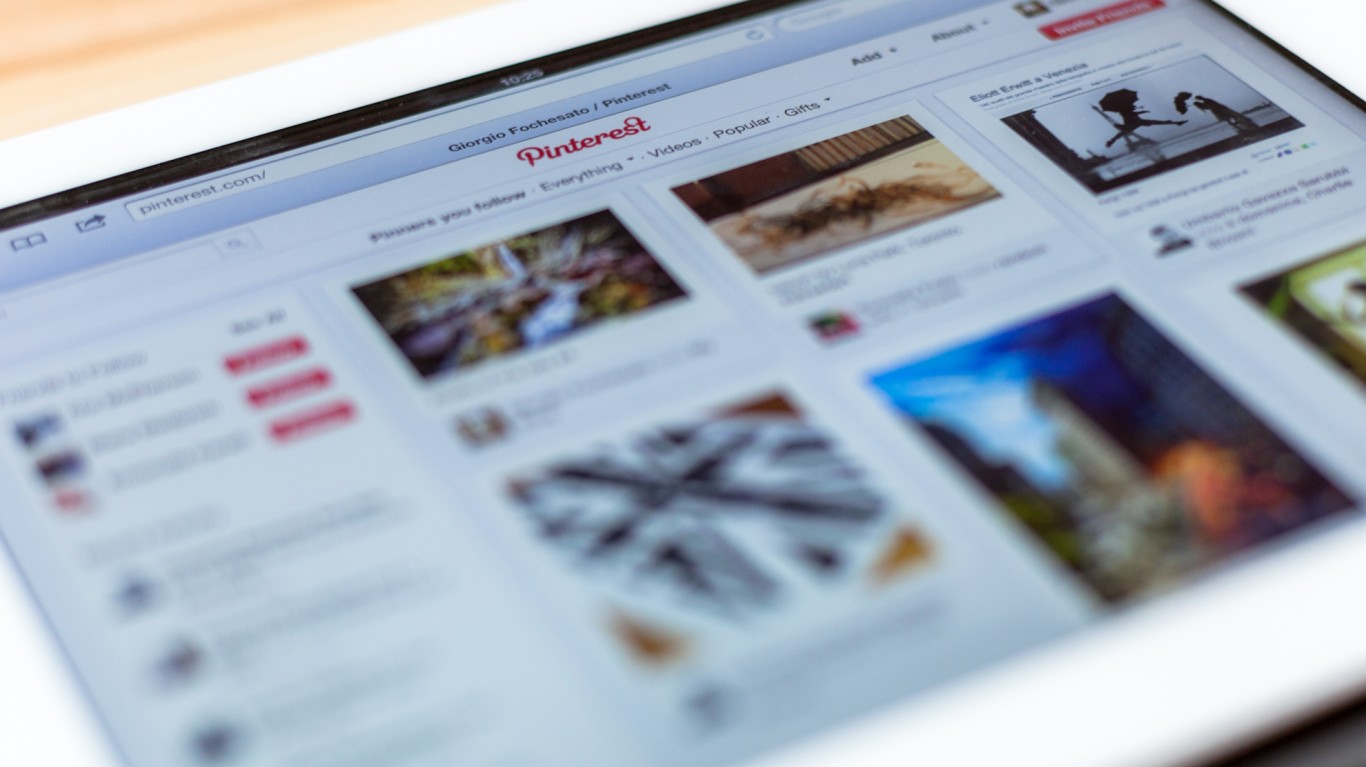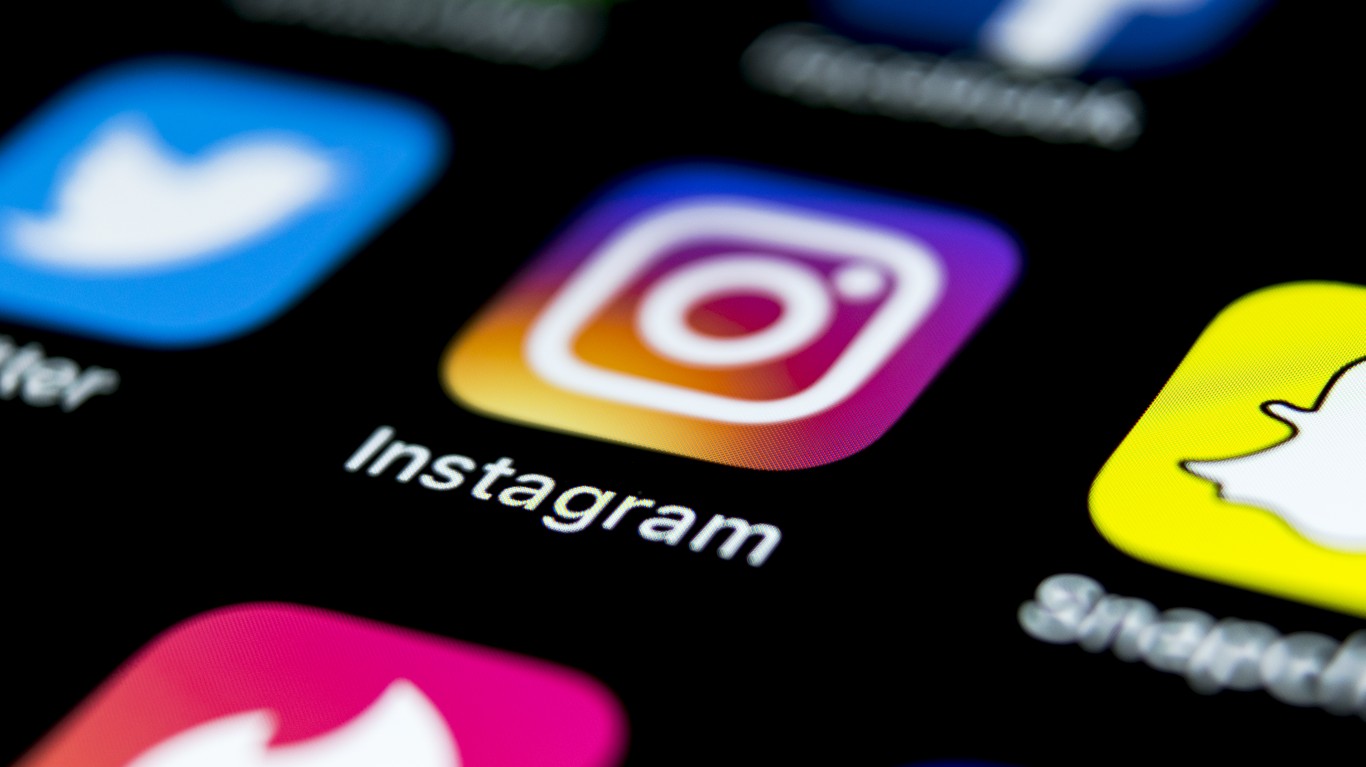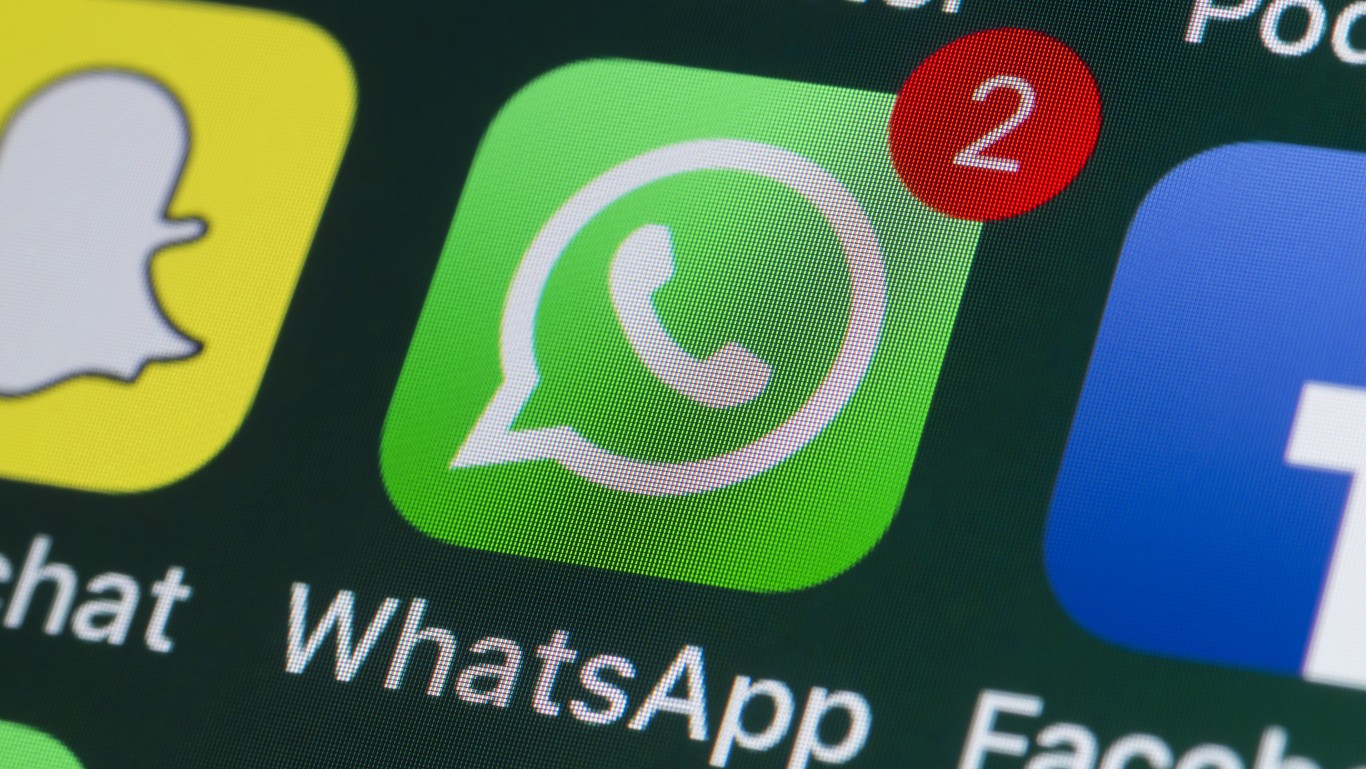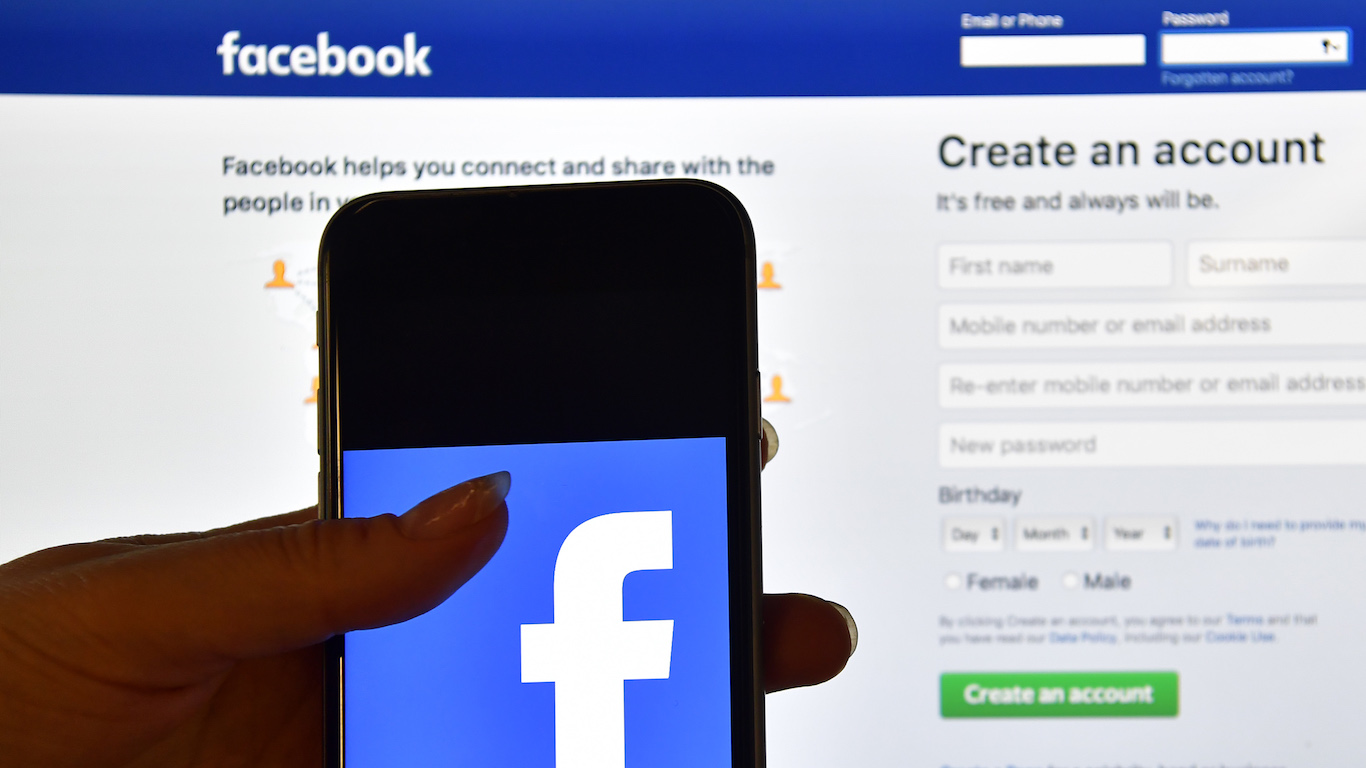Special Report
17 Twitter Competitors: What Share Of Social Media Does It Have?

Published:

Social media has become part of our daily lives. It is our go-to medium to find out what’s trending, scroll pictures, watch videos, and search and download content. Nearly 4.6 billion people use social media, which accounts for over half of the world’s population. The average user engages with 6-7 different social media platforms on a regular basis. Twitter (now known as X) has been a juggernaut in the social media market almost since its inception, though it was falling a bit flat when Elon Musk took the helm in October 2022. (Social media is one of the most iconic and transformative innovations in communication history. See the full list of those communication innovations here.)
Musk’s acquisition of the company initially provided a big boost to the platform’s user base. Now, however, Twitter/X is losing ground to its competitors at a clip that is sounding alarms within the company, although some of Musk’s comments on the matter seem to signal apathy rather than alarm.
Musk’s acquisition of Twitter was international news. To be fair, almost anything the richest person in the world does is considered newsworthy. His ownership of Twitter has shined a much different spotlight on him, though. While Musk has never been one to mince words, the self-proclaimed “free speech absolutist” has become even more polarizing after his acquisition of Twitter. Instead of making headlines about an amazing new technological achievement at SpaceX or Tesla, Twitter/X has often highlighted his bombastic personality and politically charged rhetoric.
Musk has been the primary driver of the never-ending news coverage regarding Twitter/X. The company’s share of daily news headlines far outpaces its actual social media market share, though. There are numerous social media outlets with far larger shares of the social media market than the (former) bird app, but their owners are usually content to remain in the background. Musk has never been one to do that.
24/7 Wall St. evaluated the latest available monthly user data to compile this list of 17 social media sites that have larger user bases than Twitter/X.

Not that long ago, it would have seemed almost impossible that 17 social media platforms would dwarf Twitter’s share of the social media market. However, 2023 has seen a precipitous drop in the site’s base of daily and monthly users.
Musk renamed the company, “X,” in July 2023. His love of the letter is well documented with SpaceX, Tesla’s Model X, and xAI. He even named one of his sons “X AE A-XII Musk,” with “X” as his first name.
For many users, though, X did not mark the spot when it came to Twitter. The name change raised many questions. Twitter was one of the most recognizable brands in the world. It even created a new dictionary definition for the word, “tweet.” Most companies dream about such brand recognition, yet it was essentially erased when Twitter became X. Musk pushed back against the criticism, explaining that the name change was a precursor to what he called, “X, the everything app.” Many of the changes and additions that he alluded to have yet to materialize, though.
Musk also directed changes to Twitter’s functionality, including the algorithms that govern the site’s feed. One of the most recent changes that drew the ire of users was the elimination of headlines when sharing links on the site.
Downloads of the Twitter/X app have now reached their lowest point in a decade. Traffic on the site has dropped 10% globally and 15% in the U.S. from the same time last year. Ad revenue is also down sharply from a year ago.
Some of the decline could reflect users’ disapproval of the name, appearance, and/or functionality changes on the site. However, a large portion of that drop is almost certainly attributable to Musk’s polarizing persona. He is the most followed person on Twitter/X with 163 million followers. It should be noted, though, that tens of millions of accounts that follow Musk have no followers of their own, meaning they could be bots. Regardless, Musk has unquestionably become the star of the show on Twitter/X. Millions of formers users have decided they don’t care to watch that show anymore, though.
In November 2022, Musk said that he expected Twitter/X to reach one billion users in 2024. That was before the platform began hemorrhaging users throughout much of 2023. In fact, eight months after his projection of one billion users, Musk admitted that the site may fail altogether.
A user base of one billion certainly seems like a pipe dream now. It is indeed reasonable to question whether Twitter/X will even exist at all in the coming years.

Pinterest is the self-described “app for inspiration.” Users can share and save ideas ranging from recipes and how-to tips to motivational and inspirational life content. These ideas can be saved (“pinned”) to boards that the user creates.

Reddit is a social site that allows registered users (“redditors”) to post content such as text, pictures, and videos. That content is then voted up or down by other Reddit members. These posts are categorized into communities or “subreddits” which are organized by Reddit users.

Qzone is a social media platform owned by Tencent, a Chinese technology and entertainment conglomerate. It is a blogging site that also allows users to share photos, watch videos, and listen to music.
QQ is also owned by Tencent. The social media microblogging platform allows users to play games, listen to music, and chat with friends.
Twitter/X is banned in China, although an unknown number of users get around this ban through VPNs. Weibo is China’s approved version of Twitter. It is a popular microblogging site that functions in much the same way as Twitter, allowing users to share and comment on messages, pictures, and videos. It also features a multimedia instant messaging option.
Kuaishou was the first short video social media platform in China. It began as an app called GIF Kuaishou which allowed users to create and share, you guessed it, GIFs. In 2013, the app expanded to include short videos. It added live-streaming in 2016. While it has been outmuscled by Douyin and especially by TikTok (more on both of those platforms momentarily), the social video app still boasts an impressive user base. Most users are in China, but its reach does extend worldwide.

Douyin is essentially China’s version of TikTok (although Douyin actually preceded TikTok). ByteDance, a Chinese internet technology company, owns both social media video platforms. While the design and functionality of Douyin and TikTok are basically the same, the two apps are separate entities. TikTok is not available in China and user data is not shared between the two platforms.

This social platform was originally launched as “Picaboo,” then relaunched under its current name. It was the brainchild of three students at Stanford University.
On the surface, Snapchat may have seemed somewhat similar to other social media sites. However, there was one major difference. All pictures that were uploaded to this new app would eventually disappear. The idea was that Snapchat allowed users to capture and share the true and pure emotions of a moment, without worrying about creating the perfect picture that would live on the internet forever. In the middle of the social media world where so many people try so hard to curate images that promote a fake persona, Snapshot was seen as more authentic, raw, and real.
Mark Zuckerberg recognized the potential of the app and made multiple offers to purchase Snapchat. He was was rebuffed each time. In response to those rejections, Facebook countered with an app called “Poke” in 2012. The app flopped and was discontinued in 2014.
Some of Snapchat’s innovations, particularly its stories, are now seen on other social media platforms such as Instagram.

Telegram is a messaging app that allows users to send messages, pictures, videos, and files. It supports voice and video calls, too, which feature end-to-end encryption.
The app also features voice and video chat for groups. Users can create groups as small as a couple of people to massive groups of 200,000.

LinkedIn launched in 2003 and reached one million users the following year. By 2007, it had ten million users. Microsoft acquired the site in 2016.
Today, LinkedIn is the world’s largest social networking site designed specifically for business. The platform allows users to create profiles that they can use to look for jobs, join industry groups, and connect with other professionals.
Facebook first introduced a messaging feature known as Facebook Chat in 2008. It then launched Facebook Messenger, often known simply as Messenger, in 2011.
The app allows users to send messages, photos, videos, audio files, and more. It also allows users to make voice and video calls. While it does not claim the same user base as WhatsApp (also owned by Meta), Messenger remains one of the most popular social messaging apps worldwide.

TikTok’s rise to social media prominence has been meteoric. It was launched by ByteDance in 2016. The following year, ByteDance acquired musical.ly, a popular social media app that allowed users to share short videos that were usually music-driven. By late 2018, TikTok was the most downloaded free app in the United States. By 2021, the app had over a billion monthly active users worldwide.
The platform began as a way to share short videos lasting around 15 seconds. The name “TikTok” was a reference to the short allotted time for these videos. Today, videos as long as ten minutes are supported. The platform is so culturally engrained that the videos themselves are now known as “TikToks.”
ByteDance is based in Beijing (although it is registered in the Cayman Islands). Concerns over privacy and fears that the Chinese government can demand user information from ByteDance have fanned the flames of controversy. Some U.S. lawmakers have called for a complete ban on TikTok. Many users seem unconcerned, though. TikTok is one of the fastest-growing social media platforms in the world.
WeChat is a Chinese app that allows users to message, play video games, send mobile payments, share pictures and videos, and much more. The social media platform is subsidized by the state. Tencent owns WeChat, but is required to share users’ information with the Chinese government.
WeChat is the most popular social media platform in China. Other social media sites such as Facebook and Instagram are banned by the government. This makes Facebook’s 3.03 billion users all the more impressive, considering it is prohibited in the most populous nation in the world. Facebook is also banned in nations such as Russia, Iran, North Korea, and Turkmenistan.

Instagram, the wildly popular photo and video-sharing site, was founded by Kevin Systrom and Mike Krieger in 2010. The first prototype of the site was called Burbn, a nod to Systrom’s affinity for whiskey and bourbon. It was launched with the express purpose of sharing photos taken on mobile devices.
The platform was purchased by Facebook, Inc. (Meta) in 2012. Meta owns three of the top four social media platforms in the world. Approximately 95 million pictures and videos are uploaded to Instagram each day.

WhatsApp, was founded by two former Yahoo employees in 2009. It was purchased by Facebook, Inc. (Meta) in 2014.
The name, “WhatsApp,” is a play on the common greeting, “What’s up?” It is a social platform that allows users to send private text messages, pictures, and locations. It also supports voice calls, recorded voice messages, and video calls. Many users prefer WhatsApp over SMS text messaging because of increased privacy and security.

YouTube is the second most visited website in the world, trailing only Google (which owns YouTube).
What started as an idea for sharing amateur videos (then known as “home movies”) has grown into a video and social media platform that has become the dominant force in online media.
The site supports over 100 million channels and nearly two and a half billion users. The top four YouTube channels alone have more subscribers than Twitter/X users.

To paraphrase Mark Twain, the reports of Facebook’s death have been greatly exaggerated. It seems to be an accepted fact in many circles that Facebook is on the decline due to the number of Gen Z users rejecting the platform in favor of other social media outlets. While it is true that Facebook’s smallest U.S. audience is teenagers (3.4%), the largest demographic of users remains 25-34-year-olds (23.6%). That hardly makes it “your grandma’s social media” (not that we have anything against grandmas who used Facebook).
The social media platform’s worldwide user base is staggeringly large. Over 37% of the world’s 8.1 billion people have a Facebook account. If Facebook were its own country, it would be the most populous nation on Earth. The social media giant has more users than the two most populous countries (China and India) combined. It’s user base is more than 7.7 times that of Twitter/X.
Remember when users could “poke” one another on Facebook? A lot of people now “poke” fun at the platform as being old and outdated, but Facebook is laughing all the way to the bank. It remains the undisputed king of social media.
Are you ahead, or behind on retirement? For families with more than $500,000 saved for retirement, finding a financial advisor who puts your interest first can be the difference, and today it’s easier than ever. SmartAsset’s free tool matches you with up to three fiduciary financial advisors who serve your area in minutes. Each advisor has been carefully vetted and must act in your best interests. Start your search now.
If you’ve saved and built a substantial nest egg for you and your family, don’t delay; get started right here and help your retirement dreams become a retirement reality.
Thank you for reading! Have some feedback for us?
Contact the 24/7 Wall St. editorial team.